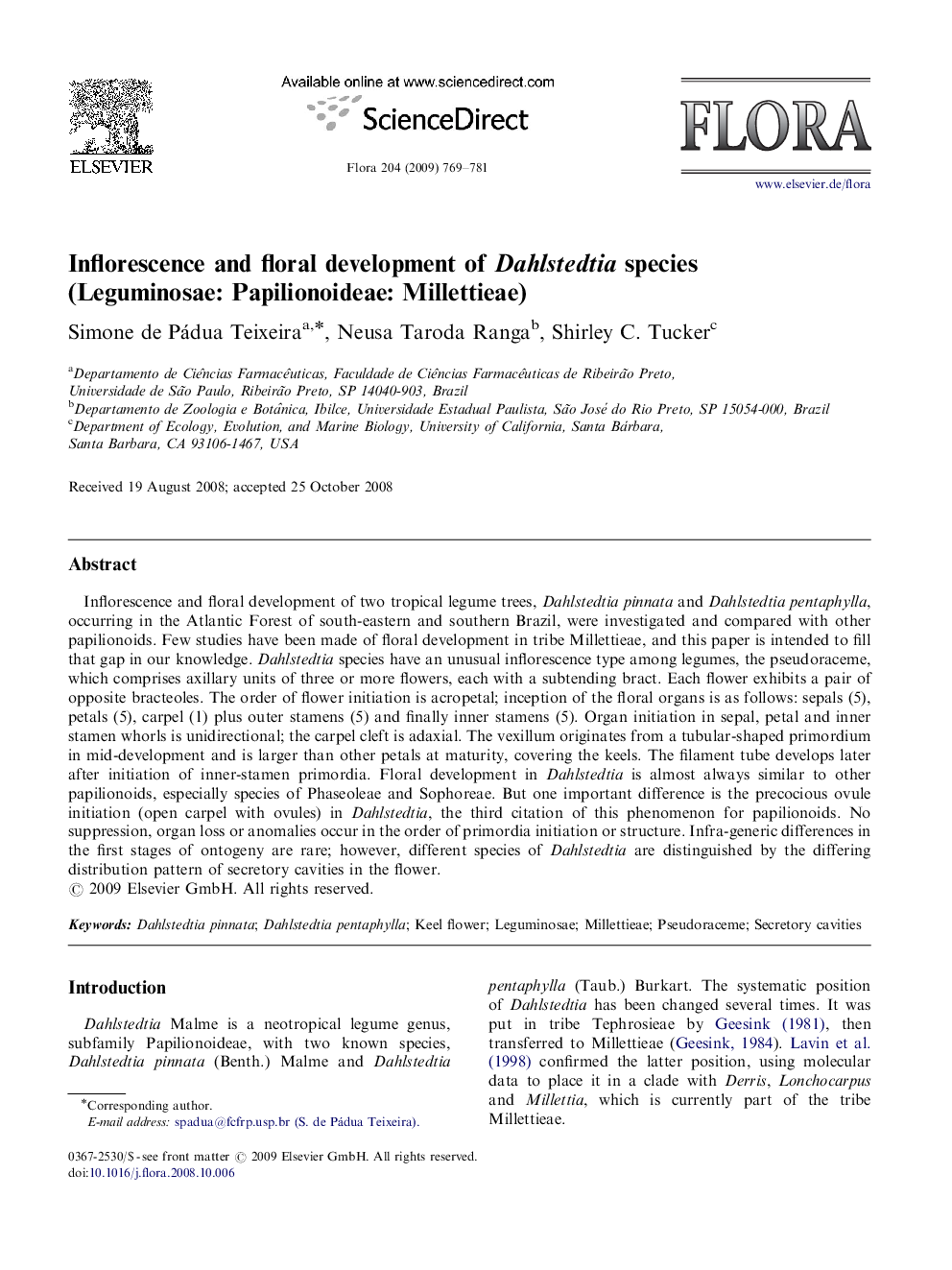| Article ID | Journal | Published Year | Pages | File Type |
|---|---|---|---|---|
| 2179994 | Flora - Morphology, Distribution, Functional Ecology of Plants | 2009 | 13 Pages |
Inflorescence and floral development of two tropical legume trees, Dahlstedtia pinnata and Dahlstedtia pentaphylla, occurring in the Atlantic Forest of south-eastern and southern Brazil, were investigated and compared with other papilionoids. Few studies have been made of floral development in tribe Millettieae, and this paper is intended to fill that gap in our knowledge. Dahlstedtia species have an unusual inflorescence type among legumes, the pseudoraceme, which comprises axillary units of three or more flowers, each with a subtending bract. Each flower exhibits a pair of opposite bracteoles. The order of flower initiation is acropetal; inception of the floral organs is as follows: sepals (5), petals (5), carpel (1) plus outer stamens (5) and finally inner stamens (5). Organ initiation in sepal, petal and inner stamen whorls is unidirectional; the carpel cleft is adaxial. The vexillum originates from a tubular-shaped primordium in mid-development and is larger than other petals at maturity, covering the keels. The filament tube develops later after initiation of inner-stamen primordia. Floral development in Dahlstedtia is almost always similar to other papilionoids, especially species of Phaseoleae and Sophoreae. But one important difference is the precocious ovule initiation (open carpel with ovules) in Dahlstedtia, the third citation of this phenomenon for papilionoids. No suppression, organ loss or anomalies occur in the order of primordia initiation or structure. Infra-generic differences in the first stages of ontogeny are rare; however, different species of Dahlstedtia are distinguished by the differing distribution pattern of secretory cavities in the flower.
